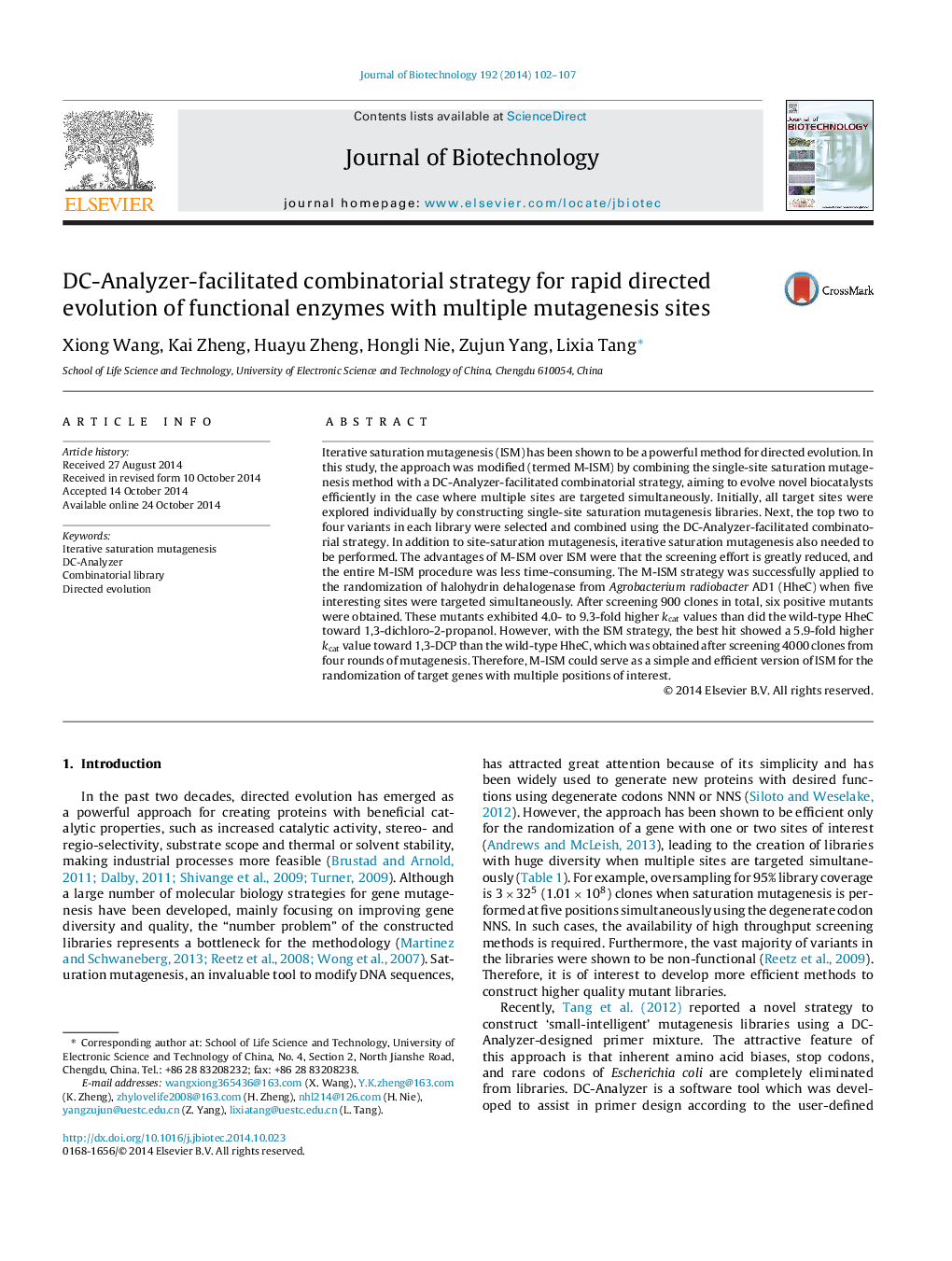| Article ID | Journal | Published Year | Pages | File Type |
|---|---|---|---|---|
| 6491307 | Journal of Biotechnology | 2014 | 6 Pages |
Abstract
Iterative saturation mutagenesis (ISM) has been shown to be a powerful method for directed evolution. In this study, the approach was modified (termed M-ISM) by combining the single-site saturation mutagenesis method with a DC-Analyzer-facilitated combinatorial strategy, aiming to evolve novel biocatalysts efficiently in the case where multiple sites are targeted simultaneously. Initially, all target sites were explored individually by constructing single-site saturation mutagenesis libraries. Next, the top two to four variants in each library were selected and combined using the DC-Analyzer-facilitated combinatorial strategy. In addition to site-saturation mutagenesis, iterative saturation mutagenesis also needed to be performed. The advantages of M-ISM over ISM were that the screening effort is greatly reduced, and the entire M-ISM procedure was less time-consuming. The M-ISM strategy was successfully applied to the randomization of halohydrin dehalogenase from Agrobacterium radiobacter AD1 (HheC) when five interesting sites were targeted simultaneously. After screening 900 clones in total, six positive mutants were obtained. These mutants exhibited 4.0- to 9.3-fold higher kcat values than did the wild-type HheC toward 1,3-dichloro-2-propanol. However, with the ISM strategy, the best hit showed a 5.9-fold higher kcat value toward 1,3-DCP than the wild-type HheC, which was obtained after screening 4000 clones from four rounds of mutagenesis. Therefore, M-ISM could serve as a simple and efficient version of ISM for the randomization of target genes with multiple positions of interest.
Related Topics
Physical Sciences and Engineering
Chemical Engineering
Bioengineering
Authors
Xiong Wang, Kai Zheng, Huayu Zheng, Hongli Nie, Zujun Yang, Lixia Tang,
